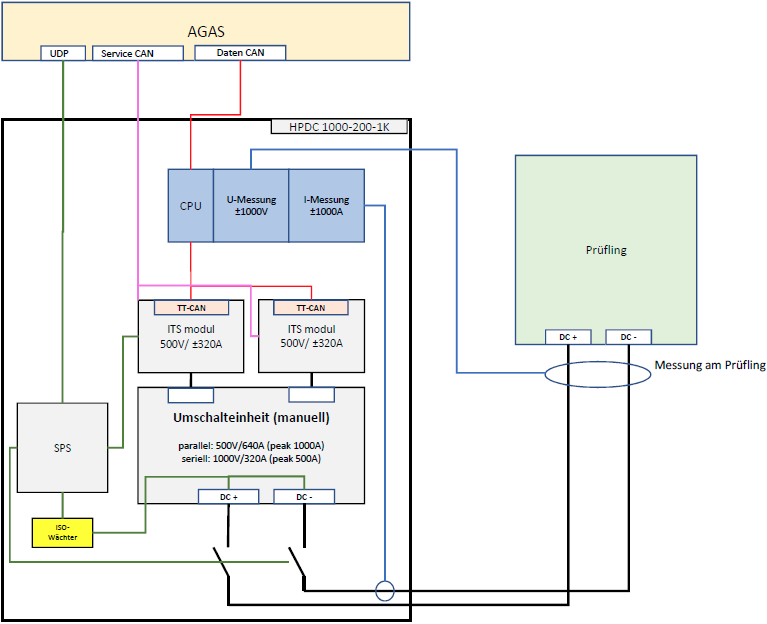Battery Test Station HPDC 1000 BattTest
The HPDC high-voltage energy system is used to test components of modern vehicle drive concepts in the field of E-Mobility.
The system is operated in two-quadrant mode (source / sink). The HPDC BattTest system is connected to the DC link. Due to the self-sufficient energy supply within the test facility only the losses are incurred as energy consumption during stationary operation. Figuratively speaking, the energy flows in a circuit.
The future oriented, modular, compact AIP System design offers both, IGBT and SIC technology, and AIP can equip the power electronics with the technology, as required.
Multi-channel design of the BattSim / BattTest systems
- Systems can be designed as 2-channel with a total of up to 4 DC outputs, of which 2 DC outputs can be used simultaneously
- Relevant e.g. for test runs with front axle/rear axle or additional charging function
Advantages of the DC intermediate circuit
- Cost savings
- Reduction of the required AC connected load
- Utilization of the simultaneity factor for efficient test system operation
- Compact system design
- Demand-oriented power distribution to individual test systems
- Reliability of the DC-side supply

The HPDC BattTest consists of a feed/feedback unit, the power fields, a control unit and a heat exchanger unit. The feed unit is used to provide the required power supply for the power modules. A control cabinet field is equipped with 2 power modules of 100 kW each.

Technical Data per Control Cabinet Panel
| Dimensions per control cabinet panel (W x H x D) |
on request |
mm |
| Dimensions basic module incl. heat exchanger (W x H x D) |
on request |
mm |
| Number of modules |
2 |
pieces |
Power
overload |
200
300 |
kW
kW / 30s |
Current
overload |
320 (serial) / 640 (parallel)
500 (serial) / 1.000 (parallel) |
A
A / 30s |
| Voltage |
20 … 1.000 (serial) / 20 … 500 (parallel) |
V |
Voltage measurement,
Reproducibility |
± 0,1 |
% v. EW |
Current measurement,
Reproducibility |
± 0,1 |
% v. EW |
| Voltage accuracy |
0,05 |
% MW |
Application Range
- Carrying out reproducible function and life cycle tests of complete battery systems
Advantages
- Modular system structure
- Highly dynamic and precisely controlled power electronics